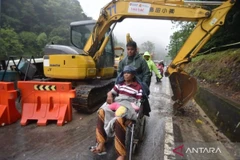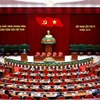Bangkok (NNT/VNA) - Thailand's Ministry of Commerce is formulating its official response to a five-point trade proposal from the United States following virtual negotiations aimed at balancing bilateral commerce.
Permanent Secretary of the Ministry of Commerce Vuttikrai Leewiraphan led the Thai delegation in a video conference with the Office of the United States Trade Representative (USTR) on June 18. During the meeting, the US presented five main proposals to address the trade balance between the two nations.
The US proposal covers measures related to tariffs and quotas. It also addresses non-tariff barriers and the management of digital trade data. The final two points concern rules of origin for products and measures for economic and national security.
The USTR has requested that Thailand submit its preliminary response based on this five-point framework by tomorrow.
Permanent Secretary Vuttikrai expressed confidence that the discussions and Thailand's counter-proposal will yield positive results. He noted that Thailand has already made initial offers, including reducing import tariffs on certain goods and purchasing Boeing aircraft and military equipment from the US.
The Permanent Secretary believed Thailand's formal proposal will be substantial enough for the US to consider further detailed negotiations. He hoped for a tariff rate not exceeding 10% and suggested that the US might extend the negotiation period if an agreement is not reached by the July 8 deadline.
Vuttikrai affirmed that Thailand's position in the negotiations will not create a trade disadvantage. Instead, it is intended to help restructure the nation's economy. Representatives from several government bodies, including the ministries of finance, agriculture, and foreign affairs, also participated in the meeting./.

Thailand records strongest export growth since early 2022
The Ministry of Commerce reported that imports also rose 18% to 29.9 billion USD during the same period, resulting in a trade surplus of 1.1 billion USD. In May alone, Thailand posted a 4.6 billion USD trade surplus with the US and a 4.1 billion USD trade deficit with China.



























